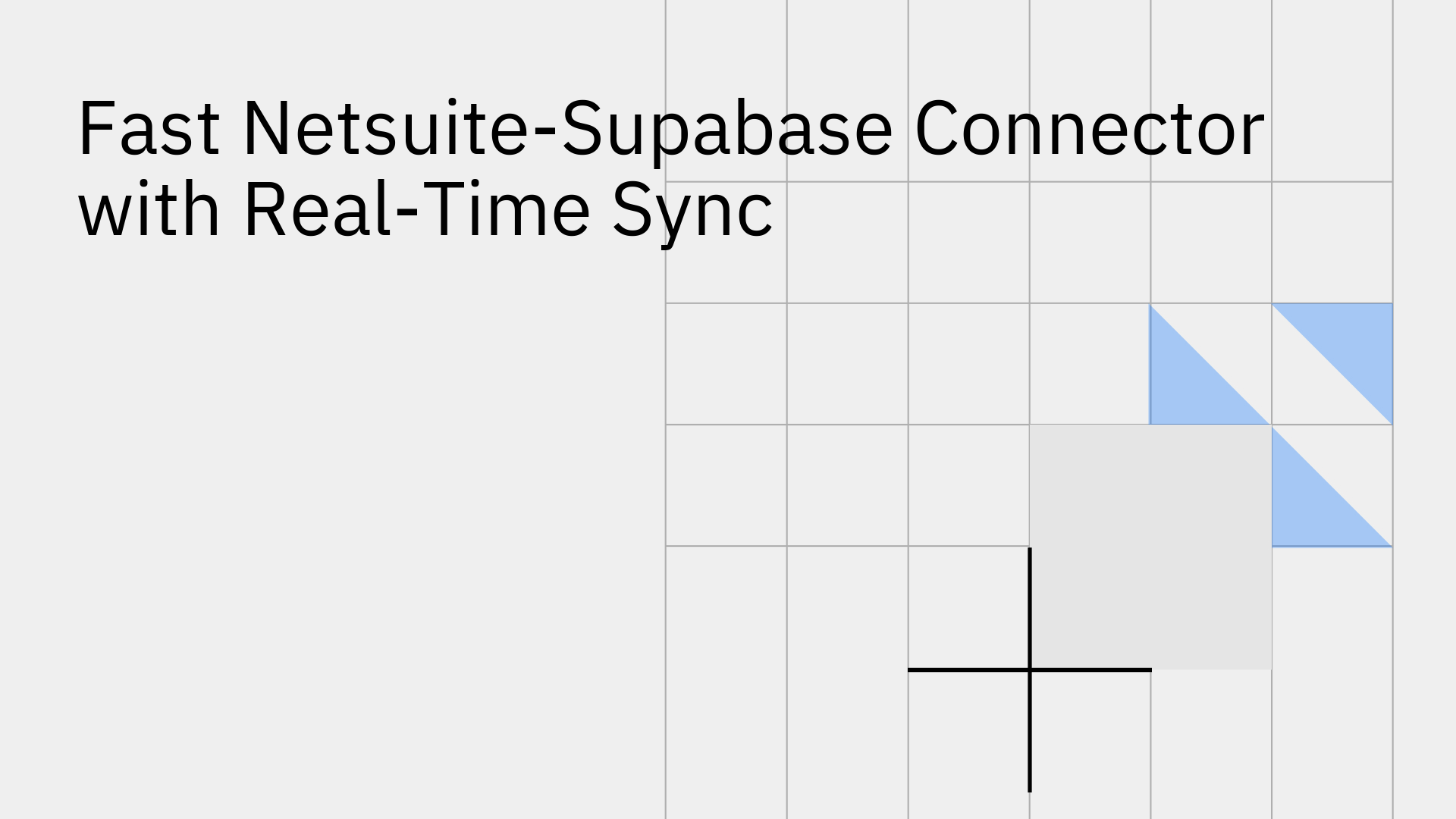
Integrating a complex ERP system like NetSuite with a modern, flexible database like Supabase is a critical challenge for businesses aiming to build real-time applications and analytics. To succeed, you need a fast, reliable, and scalable data pipeline that moves beyond the limitations of traditional integration methods.
Stacksync provides the definitive solution: a high-performance Netsuite Supabase connector engineered for real-time, bi-directional synchronization that bridges this gap without requiring a single line of code.
Companies attempting to connect NetSuite and Supabase frequently encounter significant technical friction. NetSuite’s complex data structures and strict API governance create major bottlenecks, and its API imposes concurrency and rate limits that are easily breached by custom scripts, leading to failed syncs and data gaps. This problem is especially pronounced when you need to fix NetSuite integration bottlenecks with real-time sync, as modern applications demand high performance.
Traditional integration approaches consistently fall short:
A NetSuite-Supabase connector is a specialized, pre-built integration designed to automate the flow of data between NetSuite's ERP environment and a Supabase PostgreSQL database. It abstracts away the complexity of managing the APIs of both systems.
Connectors are primarily defined by their synchronization model:
The difference between real-time sync and batch processing is also critical. While many tools offer data pipelines, they often operate in batches, creating delays [3]. True real-time synchronization propagates changes in milliseconds. You can sync Netsuite and Supabase in real time with two-way sync to guarantee your data is always consistent across platforms.
Stacksync is the premier no-code integration platform engineered for high-performance, bidirectional data synchronization between mission-critical systems. Our Netsuite Supabase connector is not just a simple data pipe; it's a fully managed, resilient solution designed to handle enterprise-scale workloads with unparalleled reliability.
Key features of the Stacksync connector include:
Configuring your real-time NetSuite-Supabase sync with Stacksync is a straightforward, four-step process designed for speed and simplicity.
A fast, bidirectional connector between NetSuite and Supabase unlocks powerful capabilities for developers and data teams, transforming how you leverage your core business data.
Developers can build custom applications on Supabase using live NetSuite data—such as customer information, sales orders, and financial data—without ever touching the complex NetSuite API. This allows them to leverage familiar PostgreSQL and modern development frameworks to power internal tools and accelerate development cycles.
Sync inventory levels, product information, and order statuses between a Supabase-powered e-commerce storefront and NetSuite. This ensures customers see accurate, real-time stock levels and order updates, while all financial and fulfillment data is consolidated correctly in your ERP. Many businesses are already powering real-time NetSuite-Shopify sync with our connectors.
Feed live financial and operational data from NetSuite directly into Supabase for up-to-the-minute business intelligence. Data teams can connect tools like Metabase or Retool to Supabase to build real-time dashboards for monitoring sales performance and financial health without waiting for batch ETL jobs to complete [2].
Use data changes in one system to trigger automated actions in another. For example, a new customer signing up in a Supabase application can automatically create a corresponding customer record in NetSuite, or an updated invoice status in NetSuite can trigger a notification in your custom application [4].
Stop wasting valuable engineering resources on building and maintaining brittle, custom integration scripts. Stacksync provides a fast, reliable, and scalable Netsuite Supabase connector that you can deploy in minutes. By eliminating the technical overhead, you empower your team to focus on building applications and deriving insights that drive business value.
Ready to unlock the power of your NetSuite data in real time? Book a demo with one of our integration experts or start a free 14-day trial and begin syncing your data today.